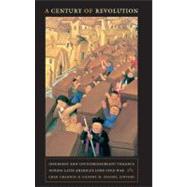
A Century of Revolution
by Grandin, Greg; Joseph, Gilbert M.; Rosenberg, Emily S.; Katz, Friedrich (CON)Buy New
Rent Textbook
Rent Digital
Used Textbook
We're Sorry
Sold Out
How Marketplace Works:
- This item is offered by an independent seller and not shipped from our warehouse
- Item details like edition and cover design may differ from our description; see seller's comments before ordering.
- Sellers much confirm and ship within two business days; otherwise, the order will be cancelled and refunded.
- Marketplace purchases cannot be returned to eCampus.com. Contact the seller directly for inquiries; if no response within two days, contact customer service.
- Additional shipping costs apply to Marketplace purchases. Review shipping costs at checkout.
Summary
Author Biography
Table of Contents
| Living in Revolutionary Time: Coming to Terms with the Violence of Latin America's Long Cold War | p. 1 |
| The First Cold War | |
| Violence and Terror in the Russian and Mexican Revolutions | p. 45 |
| Mueras y matanza: Spectacles of Terror and Violence in Postrevolutionary Mexico | p. 62 |
| On the Road to "El Porvenir": Revolutionary and Counterrevolutionary Violence in El Salvador and Nicaragua | p. 88 |
| Ránquil: Violence and Peasant Politics on Chile's Southern Frontier | p. 121 |
| The Cuban Conjuncture | |
| The Trials: Violence and Justice in the Aftermath of the Cuban Revolution | p. 163 |
| Beyond Paradox: Counterrevolution and the Origins of Political Culture in the Cuban Revolution, 1959-2009 | p. 199 |
| The Weight of the Night | |
| The Furies of the Andes: Violence and Terror in the Chilean Revolution and Counterrevolution | p. 239 |
| A Headlong Rush into the Future: Violence and Revolution in a Guatemalan Indigenous Village | p. 276 |
| "People's War," "Dirty War": Cold War Legacy and the End of History in Postwar Peru | p. 309 |
| The Cold War That Didn't End: Paramilitary Modernization in Medellín, Colombia | p. 338 |
| Reflections | |
| You Say You Want a Counterrevolution: Well, You Know, We All Want to Change the World | p. 371 |
| Thoughts on Violence and Modernity in Latin America | p. 381 |
| Conclusions | |
| Latin America's Long Cold War: A Century of Revolutionary Process and U.S. Power | p. 397 |
| History as Containment: An Interview with Arno | p. 415 |
| Contributors | p. 423 |
| Index | p. 427 |
| Table of Contents provided by Ingram. All Rights Reserved. |
An electronic version of this book is available through VitalSource.
This book is viewable on PC, Mac, iPhone, iPad, iPod Touch, and most smartphones.
By purchasing, you will be able to view this book online, as well as download it, for the chosen number of days.
Digital License
You are licensing a digital product for a set duration. Durations are set forth in the product description, with "Lifetime" typically meaning five (5) years of online access and permanent download to a supported device. All licenses are non-transferable.
More details can be found here.
A downloadable version of this book is available through the eCampus Reader or compatible Adobe readers.
Applications are available on iOS, Android, PC, Mac, and Windows Mobile platforms.
Please view the compatibility matrix prior to purchase.
